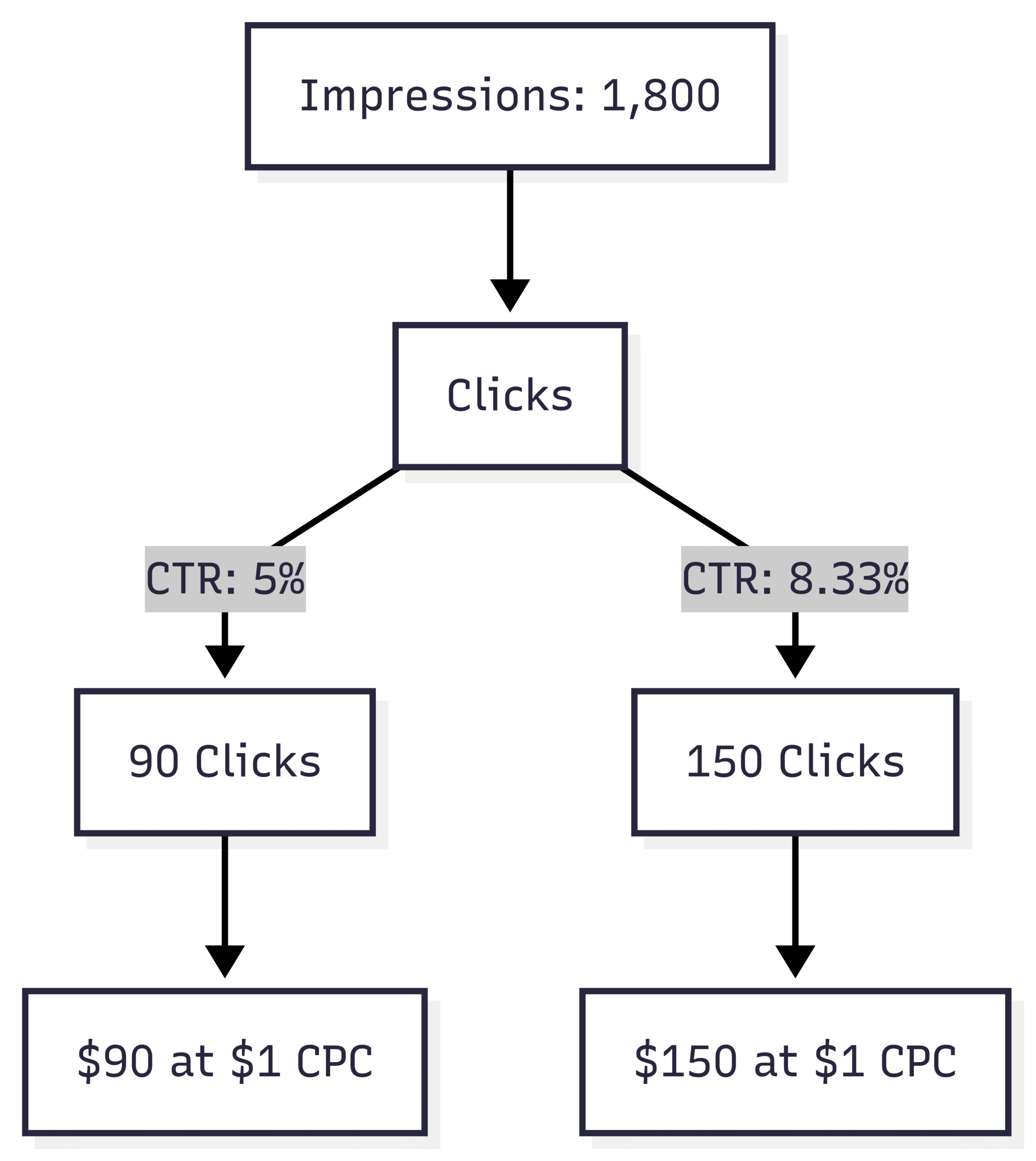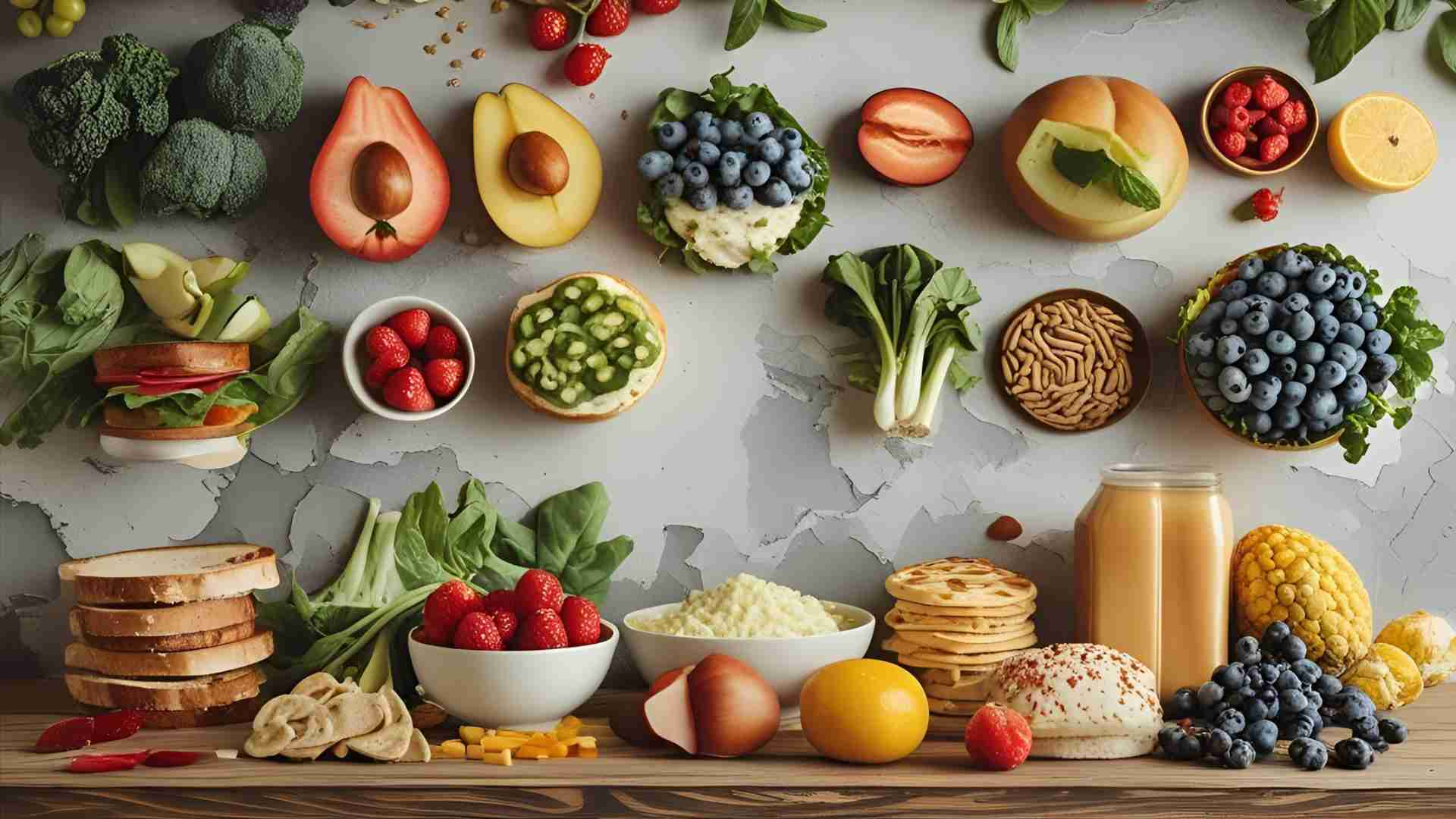Decoding the Language of Food Advertising
Master food advertising terms like CPM, CPC, and CTR to monetize your blog effectively. Learn key metrics and strategies for success.
Food blogging has evolved from a passionate hobby into a viable career path, with countless creators sharing recipes, restaurant reviews, and culinary experiences. However, turning a food blog into a sustainable income stream requires more than just mouthwatering content—it demands a solid understanding of advertising terminology and strategies. For food bloggers aiming to collaborate with brands or monetize their platforms, mastering the language of food advertising is critical. Terms like impressions, CPM, CPC, CTR, CPA, fill rate, and RPM are not just jargon; they are the building blocks of effective monetization. This guide dives deep into these concepts, offering clear explanations, practical examples, and actionable insights to help food bloggers navigate the complex world of digital advertising.
Why Food Bloggers Need to Understand Advertising Terms
The food industry is a sensory-driven market, where advertising language weaves narratives that connect consumers emotionally to their culinary choices. For bloggers, this presents a unique opportunity to align their content with brand campaigns while earning revenue. Understanding advertising metrics empowers bloggers to:
- Track campaign performance accurately.
- Negotiate fair compensation with brands and ad networks.
- Optimize ad placements to balance user experience and income.
- Make data-driven decisions to grow their audience and revenue.
Without this knowledge, bloggers risk undervaluing their work or missing out on partnerships. To illustrate, consider a blogger who receives an offer from a brand but doesn’t understand the difference between CPM and CPC. They might accept a low offer, unaware that their traffic could command higher rates. This guide aims to prevent such missteps by demystifying advertising terms using a hypothetical food blog, Yum Yum Tummy, with the following stats:
- Page views: 1,000
- Ad units per page: 3
- Ads clicked: 150
- Products purchased via ads: $15
Core Advertising Terms Every Food Blogger Should Know
1. Impressions
Definition: Impressions measure the total number of times an ad is displayed on a webpage, regardless of whether it’s clicked. Each ad load counts as one impression.
Example: On Yum Yum Tummy, each page view displays three ad units, creating a potential for 3,000 impressions (1,000 page views × 3 ad units). However, the actual number depends on the ad network’s fill rate.
Why It Matters: Impressions are the starting point for most ad revenue calculations. Higher impressions typically mean more income potential, especially for CPM-based campaigns. Bloggers should aim to increase traffic and optimize ad visibility to boost impressions.
2. Fill Rate
Definition: Fill rate is the percentage of ad requests that are successfully filled with paid ads, calculated as (Impressions Filled / Total Ad Requests) ×)100%.
Example: If Yum Yum Tummy has 3,000 potential impressions but works with an ad network like Fooder Inc. with a 60% commission rate, only 1,400 impressions (3,000 × 0.60) are filled. The remaining 1,600 represent unfilled space, which may show low-paying ads or public service announcements (PSAs).
Why It Matters: A low fill rate reduces revenue, even with high traffic. Bloggers should choose ad networks with high fill rates (ideally above 80%) and inquire about how unfilled slots are managed. Some networks display PSAs for charities, while others use low-value ads, impacting overall earnings.
3. CPM (Cost Per Mille)
Definition: CPM, or cost per thousand impressions, is the amount an advertiser pays for 1,000 ad views. It’s a common metric for display ads.
Example: If Fooder Inc. offers a $2 CPM, Yum Yum Tummy’s 1,400 impressions generate $3.60 (1.8 × $2). If the network takes a 50% cut, the blogger earns $1.80.
Why It Matters: CPM-based revenue depends on traffic volume and ad network rates. Bloggers can increase CPM earnings by:
- Boosting site traffic through SEO and social media.
- Partnering with premium ad networks offering higher CPMs.
- Accounting for seasonal fluctuations (e.g., higher CPMs in Q4 due to holiday advertising).
Table: CPM Revenue Calculation
| Impressions | CPM Rate | Blogger’s Cut (50%) | Revenue |
|---|---|---|---|
| 1,800 | $2 | $1 | $1.80 |
| 5,000 | $3 | $1.50 | $7.50 |
| 10,000 | $5 | $2.50 | $25.00 |
4. CPC (Cost Per Click)
Definition: CPC is the cost an advertiser pays each time a user clicks on an ad. Revenue depends on clicks, not impressions.
Example: With Clickster Inc., Yum Yum Tummy has 150 clicks at a $1 CPC, earning $150 (150 × $1). If no clicks occur, revenue is zero, regardless of impressions.
Why It Matters: CPC campaigns reward engagement but require strategic ad placement to maximize clicks without compromising user experience. Bloggers should:
- Place ads in high-visibility areas (e.g., above the fold or in sidebars).
- Avoid excessive ads that annoy readers.
- Never click their own ads, as networks like Google AdSense ban accounts for invalid clicks.
5. CTR (Click-Through Rate)
Definition: CTR is the percentage of users who click an ad after seeing it, calculated as (Clicks / Impressions) ×)100%.
Example: Yum Yum Tummy has 150 clicks and 1,800 impressions, yielding a CTR of 8.33% (150 / 1,800 × 100).
Why It Matters: A high CTR indicates effective ad placement and relevant ads. Bloggers can improve CTR through:
- A/B testing ad formats and positions.
- Targeting niche audiences with tailored content.
- Ensuring ads align with blog content (e.g., kitchen gadgets on a recipe blog).
Chart: CTR Impact on Revenue

6. CPA (Cost Per Action)
Definition: CPA is the cost an advertiser pays when a user completes a specific action, such as a purchase or form submission. Affiliate marketing is a common CPA model.
Example: Yum Yum Tummy promotes a $500 blender via the BlendTec affiliate program, earning a 15% commission ($75) for one sale.
Why It Matters: CPA offers high payouts but requires conversions, which depend on trust and persuasive content. Bloggers can succeed by:
- Promoting products they genuinely endorse.
- Using compelling calls-to-action in reviews or tutorials.
- Targeting audiences likely to convert (e.g., home cooks for kitchen appliances).
7. RPM (Revenue Per Mille)
Definition: RPM measures revenue per 1,000 page views, calculated as (Total Revenue / Page Views) ×)1,000. It reflects overall monetization efficiency.
Example: If Yum Yum Tummy earns $200 from 1,000 page views, its RPM is $200 (($200 / 1,000) × 1,000).
Why It Matters: RPM provides a holistic view of a blog’s earning potential. To increase RPM, bloggers can:
- Optimize ad layouts for higher CTR and CPM.
- Publish high-quality, evergreen content to attract valuable visitors.
- Leverage seasonal trends (e.g., holiday recipes in Q4).
Table: RPM Comparison (Real-World Example)
| Month | Revenue | Page Views | RPM |
|---|---|---|---|
| November | $15,363.75 | 1,428,175 | $10.76 |
| December | $19,829.98 | 1,294,900 | $15.31 |
Source: Pinch of Yum Traffic and Income Reports
The Unique Language of Food Advertising
Food advertising stands apart from other industries due to its sensory and emotional appeal. Advertisers craft narratives that evoke nostalgia, indulgence, or wellness, influencing consumer choices beyond taste. For bloggers, understanding these linguistic strategies enhances content creation and brand partnerships. Here’s how different food categories use language:
Comfort Food: Emotional Connection
- Language: “Soul food,” “taste of home,” “family meal.”
- Purpose: Evokes warmth and nostalgia, appealing to consumers seeking emotional comfort.
- Example: A blogger reviewing a diner might emphasize “homestyle mac and cheese” to align with this narrative.
Fast Food: Speed and Convenience
- Language: “Quick and delicious,” “ready in minutes,” “satisfy cravings.”
- Purpose: Targets busy consumers needing efficient meal solutions.
- Example: A post about a food delivery app could highlight “effortless ordering” to resonate with this audience.
Organic Food: Purity and Sustainability
- Language: “Farm-to-table,” “freshly harvested,” “non-GMO.”
- Purpose: Appeals to health-conscious and eco-friendly consumers.
- Example: A recipe post using organic ingredients might emphasize “sustainable sourcing” to attract this demographic.
Luxury Foods: Exclusivity and Indulgence
- Language: “Decadent,” “rich,” “culinary artistry.”
- Purpose: Creates an aura of sophistication for premium products.
- Example: A review of a high-end restaurant could describe “exquisite truffle dishes” to mirror this language.
Chart: Food Advertising Language Flow

Practical Strategies for Food Bloggers
1. Optimize Ad Performance
- Test Ad Placements: Experiment with sidebar, in-content, or footer ads to find the best CTR without disrupting user experience.
- Choose the Right Ad Network: Compare networks like Mediavine, Raptive, or Google AdSense for fill rates, CPMs, and ease of use.
- Monitor Seasonal Trends: Capitalize on Q4 advertising spikes by updating holiday content early.
2. Build Trust with Affiliate Marketing
- Endorse Authentic Products: Promote items you’ve tested to maintain credibility.
- Craft Engaging Content: Write detailed reviews or tutorials to drive CPA conversions.
- Disclose Affiliations: Follow FTC guidelines to transparently disclose affiliate links.
3. Enhance Content Quality
- Focus on SEO: Use keywords like “easy recipes” or “healthy meals” to attract organic traffic.
- Improve Site Speed: Faster load times reduce bounce rates, increasing impressions and RPM.
- Analyze High-Performing Posts: Replicate elements of top RPM posts, such as engaging visuals or niche topics.
4. Negotiate with Brands
- Know Your Value: Use metrics like impressions, CTR, and RPM to justify rates.
- Clarify Deliverables: Confirm whether partnerships involve Instagram posts, blog content, or both.
- Protect Creative Rights: Specify usage terms for your photos or videos to avoid unauthorized use.
Food Blogging Terminology Beyond Advertising
Beyond ad metrics, food bloggers encounter industry-specific terms that shape their work. Here’s a quick guide:
- Foodie: A general term for food enthusiasts, though some reserve it for those with refined palates.
- Food Blogger: A foodie who manages a website with regular posts, requiring SEO and maintenance skills.
- Food Instagrammer/Influencer: Creators focusing on social media platforms like Instagram, often driving action through visual content.
- Comped Food: Free meals provided by restaurants in exchange for reviews or promotion.
- Media Dinners: Events hosted by restaurants for food media, offering extensive menu sampling.
- Tastings: Smaller, often one-on-one dining experiences for reviewing specific dishes.
- Prix Fixe Menu: A fixed-price menu with pre-selected courses, common at media events.
- Rates: Fees charged for services like sponsored posts or photography, based on effort and reach.
- Partnership/Collaboration: Often trade-based agreements requiring clear terms.
- Creative Rights: Ownership of content, requiring agreements to prevent unauthorized use.
Real-World Insights: Monetization Challenges and Opportunities
Monetizing a food blog isn’t without hurdles. Low fill rates, fluctuating CPMs, and low CTRs can frustrate beginners. However, success stories like Pinch of Yum demonstrate the potential. By focusing on high-quality content, strategic ad placement, and seasonal trends, bloggers can achieve RPMs of $10–$15 or higher. Additionally, affiliate marketing offers lucrative CPA opportunities, especially for niche products like kitchen tools or specialty ingredients.
Bloggers should also be cautious of pitfalls:
- Invalid Clicks: Clicking your own ads risks account bans.
- Overloading Ads: Too many ads harm user experience and SEO.
- Vague Partnerships: Unclear expectations with brands can lead to disputes.
Conclusion: Mastering the Language of Food Advertising
For food bloggers, decoding the language of food advertising is the key to unlocking monetization potential. By mastering terms like impressions, CPM, CPC, CTR, CPA, fill rate, and RPM, bloggers can optimize their revenue streams and build sustainable careers. Equally important is understanding the emotional and sensory language of food marketing, which connects consumers to brands and enhances content appeal. Whether you’re reviewing a cozy diner or promoting organic ingredients, aligning your content with these narratives strengthens your brand partnerships.
Start by analyzing your blog’s metrics, experimenting with ad strategies, and crafting authentic content. Reach out to ad networks for RPM advice, protect your creative rights, and stay informed about industry trends. With the right knowledge and approach, your food blog can become a thriving business, one delicious post at a time.
Please share these Decoding the Language of Food Advertising with your friends and do a comment below about your feedback.
We will meet you on next article.
Until you can read, Blogger Burnout? 8 Expert Strategies Help You to Stay Fired Up






